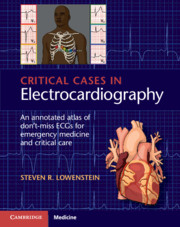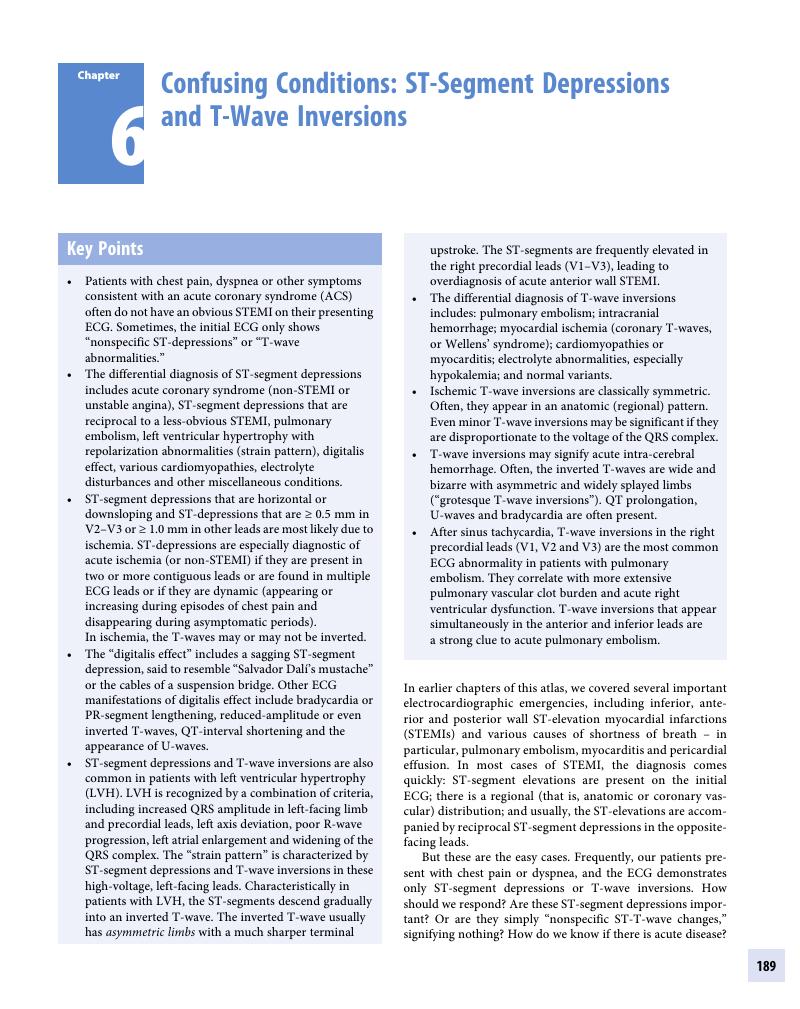 Critical Cases in Electrocardiography
Critical Cases in Electrocardiography Book contents
- Critical Cases in Electrocardiography
- Critical Cases in Electrocardiography
- Copyright page
- Dedication
- Contents
- Foreword
- Preface
- Acknowledgments
- Chapter 1 The Normal Electrocardiogram
- Chapter 2 Inferior Wall Myocardial Infarction
- Chapter 3 Anterior Wall Myocardial Infarction
- Chapter 4 Posterior Wall Myocardial Infarction
- Chapter 5 The Electrocardiography of Shortness of Breath
- Chapter 6 Confusing Conditions: ST-Segment Depressions and T-Wave Inversions
- Chapter 7 Confusing Conditions: ST-Segment Elevations and Tall T-Waves (Coronary Mimics)
- Chapter 8 Critical Cases at 3 A.M.
- Index
- References
Chapter 6 - Confusing Conditions: ST-Segment Depressions and T-Wave Inversions
Published online by Cambridge University Press: 15 June 2018
- Critical Cases in Electrocardiography
- Critical Cases in Electrocardiography
- Copyright page
- Dedication
- Contents
- Foreword
- Preface
- Acknowledgments
- Chapter 1 The Normal Electrocardiogram
- Chapter 2 Inferior Wall Myocardial Infarction
- Chapter 3 Anterior Wall Myocardial Infarction
- Chapter 4 Posterior Wall Myocardial Infarction
- Chapter 5 The Electrocardiography of Shortness of Breath
- Chapter 6 Confusing Conditions: ST-Segment Depressions and T-Wave Inversions
- Chapter 7 Confusing Conditions: ST-Segment Elevations and Tall T-Waves (Coronary Mimics)
- Chapter 8 Critical Cases at 3 A.M.
- Index
- References
Summary

- Type
- Chapter
- Information
- Critical Cases in ElectrocardiographyAn Annotated Atlas of Don't-Miss ECGs for Emergency Medicine and Critical Care, pp. 189 - 229Publisher: Cambridge University PressPrint publication year: 2018


